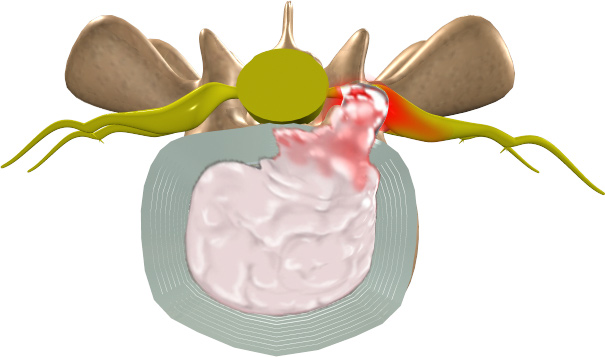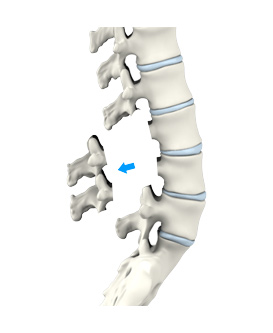
Lumbar Laminectomy
Lumbar laminectomy is a surgical procedure of the spine to relieve excess pressure on the spinal nerve(s) in the lumbar region of the lower back. The surgery can be executed to relieve the back pain or radiating leg pain due to compression over the nerve. The term laminectomy originated from the Latin words ‘lamina’ which is a ‘thin plate, sheet or a layer’ and the word ‘ectomy’ which means ‘removal’. The laminectomy involves removal of the lamina or roof of the vertebra to provide room for the nerves to leave the spine.
When lumbar laminectomy is indicated?

Spinal stenosis is one of the major indications for lumbar laminectomy. It is a condition of narrowing of spinal canal due to arthritic changes of facet joints and intervertebral discs that causes enlargement of the joint and decreases the available space for the nerve roots. Formation of bony spurs or osteophytes also can aggravate the condition.
Progression of spinal stenosis causes narrowing of your spinal canal and creates pressure over the nerve roots of the spinal cord. You may develop certain symptoms from impingement on the nerve such as back pain or radiating pain into the hips, buttocks or legs, numbness or tingling sensation and muscle weakness in the back and lower extremities.
The aim of the laminectomy is to release the compression of the spinal nerve by eliminating the part of the lamina that is causing pressure on the nerve.
The aim of the laminectomy is to release the compression of the spinal nerve by eliminating the part of the lamina that is causing pressure on the nerve.
To diagnose the requirement for lumbar laminectomy, the physician may inspect your back and medical history and request tests such as X-ray, computed tomography (CT) scan or magnetic resonance imaging (MRI) scan of your spine. Once the non- surgical treatment options such as rest, medications and physical therapy fails to reduce the symptoms after a reasonable period of time, lumbar laminectomy surgery can be recommended.
What is the procedure of lumbar laminectomy?

Lumbar laminectomy is a major surgery and mostly performed under general anesthesia. In this procedure the patient lies on his or her stomach to provide accessibility to the spine. A small incision is made along the midline of your back through which the operated site can be exposed. The surgeon slowly removes the soft tissues such as skin, fat and muscles to get better exposure of the vertebral bone at the back of the spine. Next, the surgeon removes a part or the entire lamina to eliminate the pressure over the nerve roots. If required, other sources of compression such as bony spurs or disc material also can be removed to relieve the symptoms. After the procedure the surgeon aligns the soft tissues and closes the incision.
Sometimes lumbar laminectomy may be performed along with spinal fusion which includes placement of bone graft or substitute between two or more affected vertebrae. The graft material works as a binding medium and promotes bone growth between the vertebral bodies. As the healing process progresses, the vertebral bone grows along with the bone graft to join the vertebrae and stabilize the joint.
What is the recovery period of lumbar laminectomy?
After surgery each patient has their definite post-operative rehabilitation plan that helps the patient to return to their normal active life as soon as possible. Following a laminectomy, you may observe an immediate improvement of some or all symptoms or sometimes a gradual improvement of the symptoms also may be seen.
The amount of time of hospitalization mostly depends on the treatment plan. At the end of the first day of the surgery you are allowed to move and walk around the hospital. Returning back to your daily life or to work depends on the level of healing and the type of work or activity level.
Follow your spinal surgeon’s post-operative instructions to determine the proper recovery program and to augment the healing process.
What are the risks or complications of lumbar laminectomy?
Each patient has a particular treatment plan and outcome result. Sometimes outcome results may vary from individual to individual. The complications of the lumber laminectomy include infection, nerve damage, blood clots, blood loss, bowel and bladder problems and any problem associated with anesthesia. The underlying risk of spinal fusion surgery is failure of fusion of the vertebral bones and bone graft which usually requires an additional surgery.
Please talk to your physician to obtain an ample list of indications, warnings or adverse effects or precautions, clinical results and other significant medical information related to the lumbar laminectomy procedure.
Deformity Program










 Read More
Read More
 Location Map
Location Map Patient Testimonials
Patient Testimonials Insurances
Insurances








